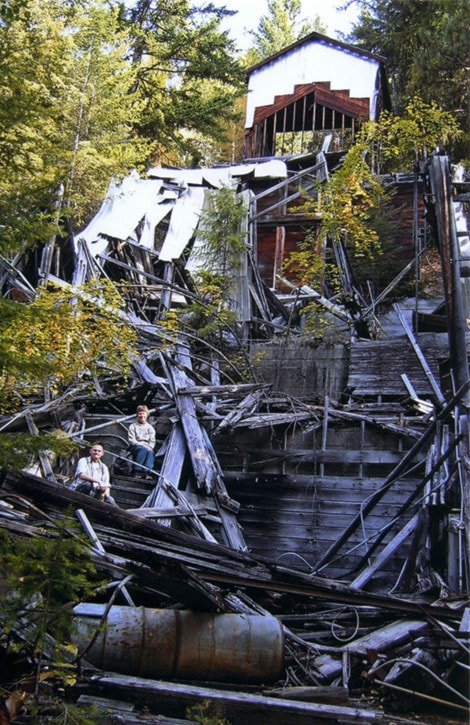As I stand gazing at remains of old mine buildings and other structures, I think of all the energy, sweat and even tears that have been poured into dreams, prospecting, old digs and mines over the last 150 years. Dreams of striking it rich, of being able to send money back home or to a sweetheart or even just being able to make a living fired the very young, the middle-aged and even the young at heart to leave families, jobs, friends and familiar surroundings in pursuit of sometimes wild dreams. One father, slipping a silver dollar into the son’s hand said goodbye, never hearing from him again. Perhaps he never made it to California, or to Barkerville. If gravestones were erected at some remote wilderness spot, and if they are legible, they might reveal New Brunswick, Nova Scotia or Prince Edward Island origins.
The Columbia-Kootenay mountain region is laced with trails, many grown over, that trace back to prospecting and mining days. Some of the pack trails were constructed with government money. They scaled and descended mountain passes between Kootenay Lake and Marys-ville. The forest landscape is pocked with digs, shallow holes to check out the rocks.
When I came to this fair land and wandered its forest glades, I ran across shallow holes beside rounded piles of dirt and rock that even supported a tree or two. I wondered what prospector stopped by here to check out the rocks. Gradually I found out that, actually, many of these shallow depressions were natural, caused by an uprooted tree. When the tree fell, the root-bound soil and rock came up too. The only evidence of a once stalwart tree is a hole and a pile of rock and dirt. Prospectors are long since gone, not around to see their digs filled in with forest litter and their piles of rock and dirt carpeted over with moss and plants.
Many prospectors left their lucrative dreams and prospects, and with their gleanings, if they had any, returned to their origins in the United States. Many who had once been involved in trapping and the fur trade took up prospecting and mining or combined the two. Others, when the fur trade and/or the metal market declined, took up pursuits including farming in more prosperous areas of the Pacific Northwest, which was once under the control of the Hudson’s Bay Trading Company (British). Their ancestry follows them in present day place names like LaClede, Coeur d’Alene, Touchet, French Town (historic site), Deschutes, La Pine, Chemult, Fremont, Ravalli and so on.
Much physical evidence of historic Kootenay mining activity has rusted and rotted away, been concealed by moss, shrubs and trees, removed in salvage and site cleanups and even smuggled away into the United States. Although mine sites today are owned by someone, humans for the most part have left the properties to wilderness takeover. Well-beaten paths between piles of rotten and weathered wood and metal, dilapidated buildings, adits and collapsed mine portals are evidence that these sites are still well populated, inhabited by bushy-tailed wood rats — cute little fellers they are. The mineshafts and adits provide great pantry places and ledges on the walls of deeply recessed tunnels one may find intricately made wintertime nests.
Clinging to overhead rocks of almost forgotten holes, long eared and brown bats sleep off January’s chilling weather. It’s a great place to “hang out” when it’s a cold –10 C out there while a warm five-degree outflow of air exits the mine. In summer, adits and mines, just about the only kind of “cave” you will find in the Kootenays, are often used as daytime roosting places for bats.
Hiking to these and other wildlife hideouts can be an exciting experience, not only in a historical perspective but a connection, while just getting there, with the natural physical, plant and animal aspects of our Columbia-Kootenay mountains.
If you happen not to find a list of what is going on in the way of community hiking out there, feel free to phone me or email me (anagallis07@yahoo.com) for information. Now, next time, look for “Being prepared”.
Ed McMackin is a biologist by profession but a naturalist and hiker by nature. He can be reached at 250-866-5747.
